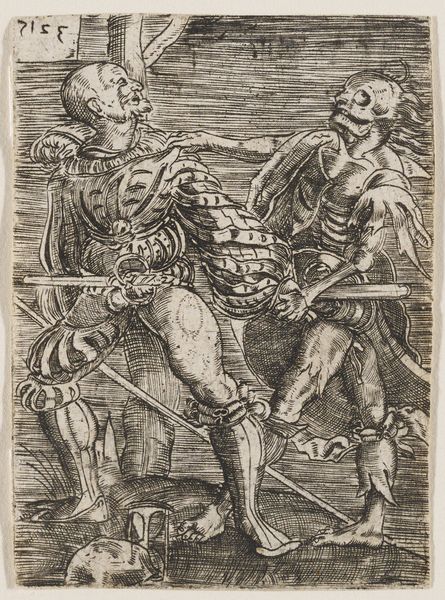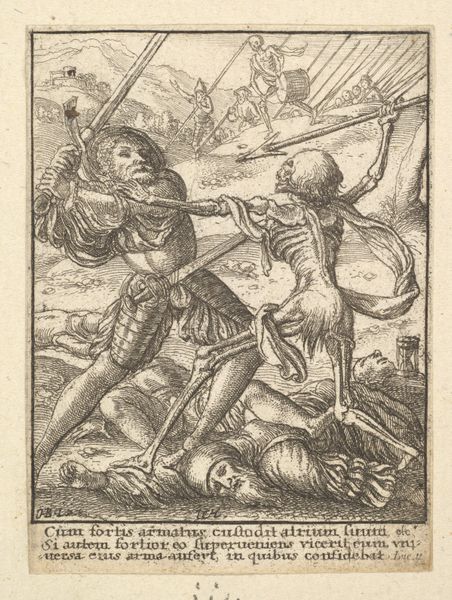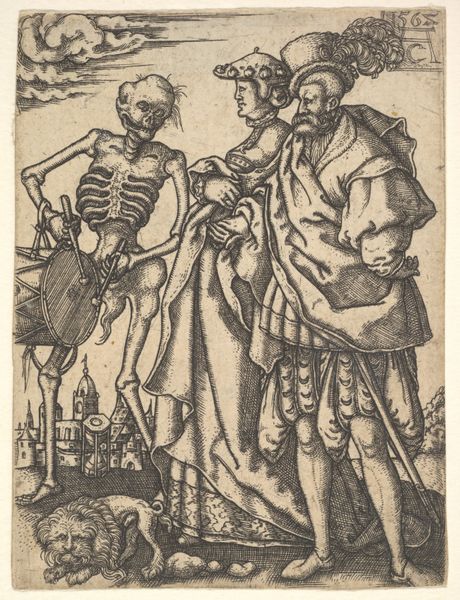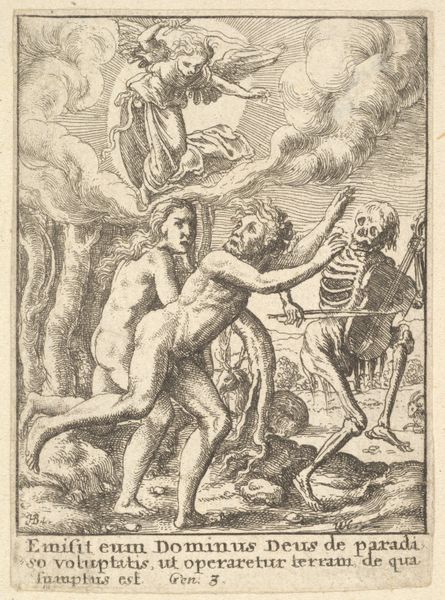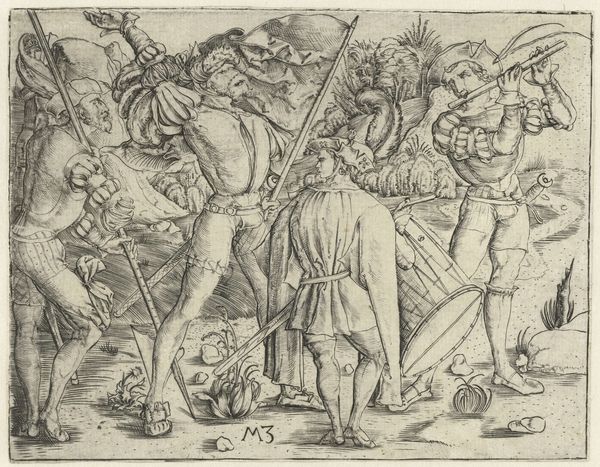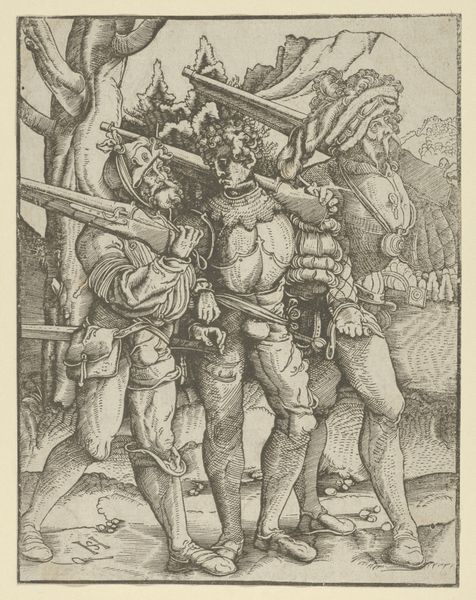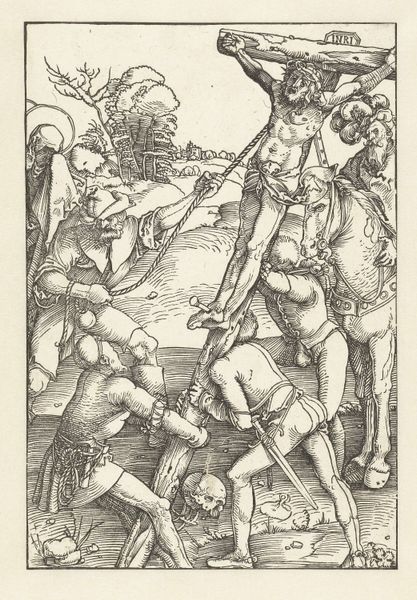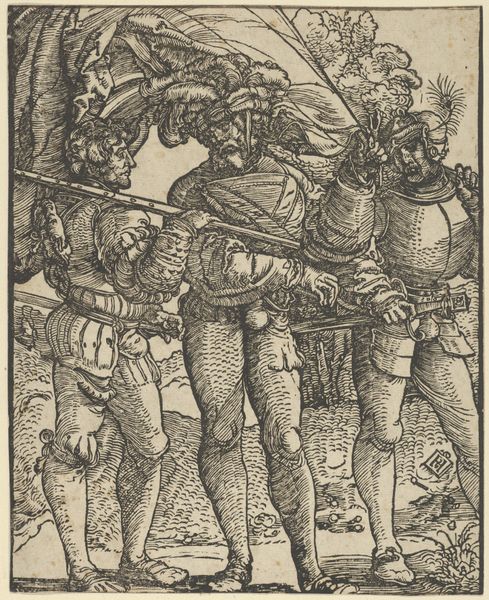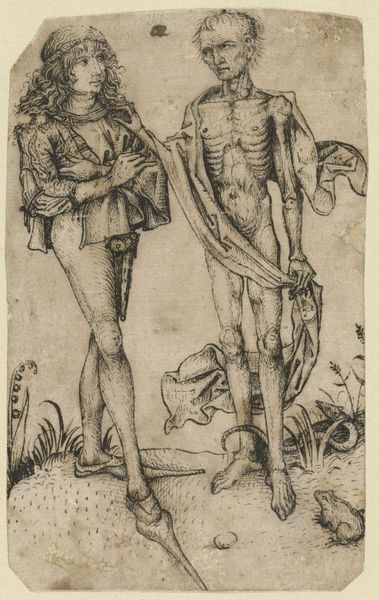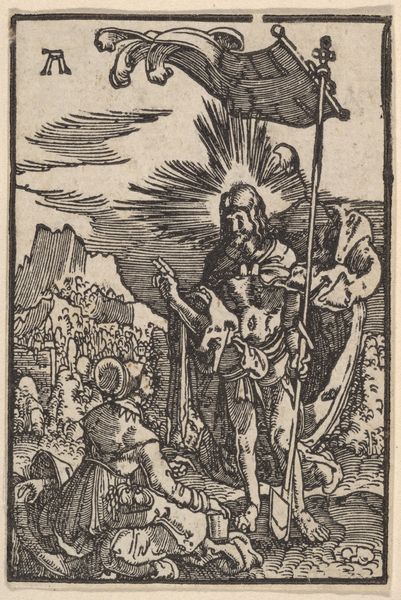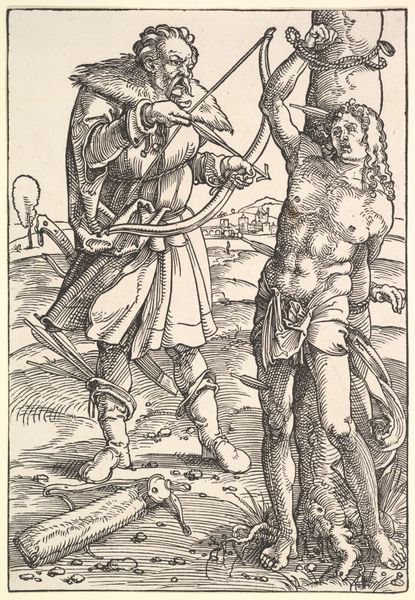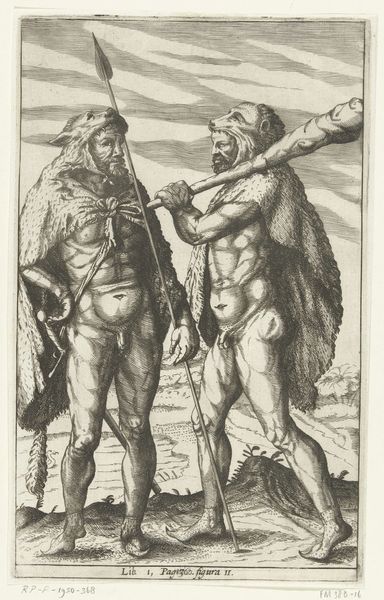
print, engraving
#
allegory
# print
#
figuration
#
northern-renaissance
#
engraving
Dimensions: 2 13/16 × 2 1/16 in. (7.14 × 5.24 cm) (sheet)
Copyright: Public Domain
Jacob Binck made this engraving, "Death and the Foot Soldier," in the 16th century, during the Northern Renaissance. It stages an encounter between a soldier in elaborate armor, and the grim figure of death. The image is an allegory, a visual representation of abstract ideas. Here, death reminds us of the fleeting nature of life. The hourglass in the bottom corner makes this message even clearer. The soldier represents earthly power, wealth, and the pride of life, but death reminds us that these things are temporary. Such imagery, made in Germanic lands, often spoke to the social anxieties of the time. Religious wars, plagues, and famines were common, and this awareness of mortality pervaded the culture. Artists like Binck made prints that served as "memento mori," reminders to contemplate mortality. The image can be understood better by viewing it in the context of the history of printmaking, social history, and the history of medicine.
Comments
No comments
Be the first to comment and join the conversation on the ultimate creative platform.
